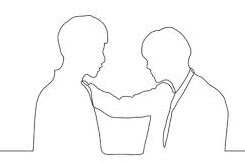Constructive dominance

Two approaches will work when we have a conflict with the direct reportees or junior colleagues. One is the compassionate approach wherein we take the parent-child relationship, create awareness / provide perspectives, make them understand our views, and finally make the things done.As discussed last week, this approach has some limitations. Another approach is constructive dominance approach .
As mentioned, in any differences, we are looking at relative power, relationship and goal.
In the constructive dominance approach, we use the power to get things done when the following situation arises.
- Either prolonged conflicts affect the organizational goal or in situations where direct reportees or junior colleagues are hostile or unmotivated to comply with your reasonable demands.
- The other person is clearly against you even after applying the compassionate approach.
- You need to maintain the relationship to reach your or functional goal.
For example,
look at the incidence in one of the client organizations. There were some quality issues in the product, and the quality head insisted on stopping the machines for conducting experiments. The production in charge was against the experiment as it would affect his delivery performance.
This conflict was continuing for some time. Whenever the business head used to review quality performance, both functional heads pointed at each other and argued from their standpoint. The conversations turned into personal ego issues than organizational problems.
At some point in time, the business head intervened by making a mandate to fix the timeline and made both people accountable to solve the problem. The conflict was resolved.
Here the business head did not apply compassionate conflict management; instead, he used his power to dominate for solving the differences among the people. That approach is required when the direct reportees are unreasonable and beyond any explanation.
Sometimes, we need to use the power to dictate what we want to achieve when we think that giving reasoning/education will never change another person's behavior. That approach is expected from the person who manages the people.
The drawback in this approach is, sometimes, work will get done as we want, but there is no place for innovation or the free flow of thinking by anyone. You became the owner of the decision and the outcome.
Some people may get offended as they perceive it as a win-lose deal
However, you must apply this approach when the goal is higher than interpersonal conflict, and you have both the power and responsibility for the result.
This approach will work when you have more power than others, but how to manage the conflict when the other person or party has equal power like you?
Let us discuss next week





